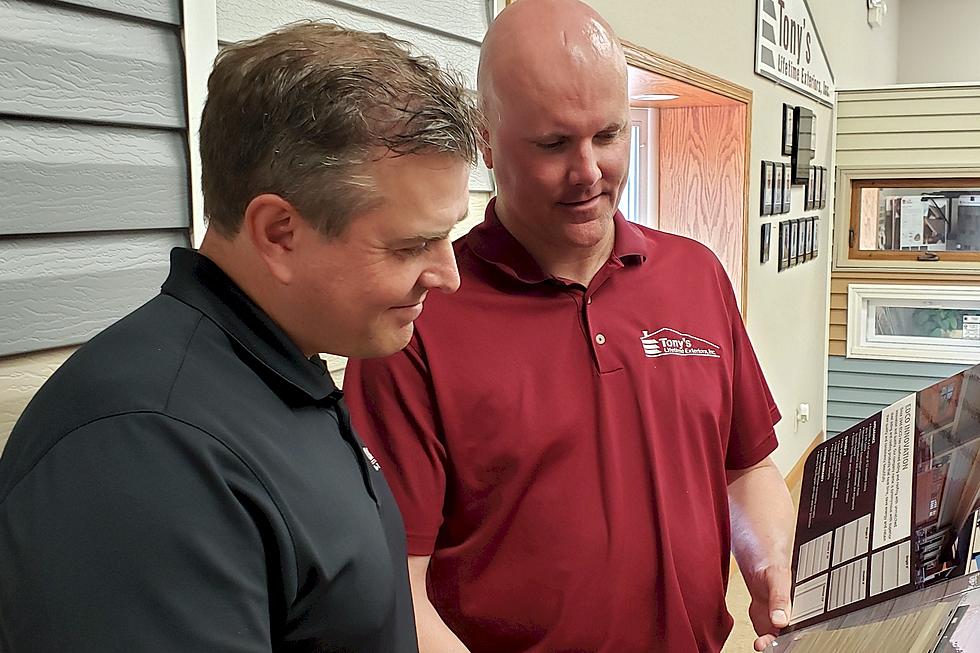
5 Tips for Planning Your Next Siding Project
Siding is perhaps the biggest influence on your home's curb appeal. It's hard to have an attractive home if the siding is cracked, worn or outdated — and damaged siding can lead to moisture issues and increase your energy bills, too.
Since your home is one of your biggest investments, you'll want to do a bit of research before replacing or adding siding. Tony's Lifetime Exteriors is working on my home, so I turned to the experts in their office for some tips for getting started on a siding project:
1) Think about what type of siding is right for you. Vinyl siding is incredibly popular since it's durable, requires so little maintenance, is affordable, and looks great with some options designed to replicate cedar siding and other textures. Steel siding "is made of heavy-gauge steel finished with a durable, long-lasting coating that resists cracking, peeling, flaking, blistering, chipping, fading, and other damage," according to Tony's Lifetime Exteriors. The third common option is seamless siding, which is custom made on site to fit your home perfectly. It's a steel material with a special coating that provides long-lasting color and texture.
Here's an example of a seamless siding project where Tony’s Lifetime Exteriors replaced the siding with new seamless steel siding, updated the windows, built a new front porch, replaced the shingles and all the soffit and fascia:
2) Consider the look and color palette you'd like. With siding coming in a variety of textures and virtually unlimited colors, the options might seem overwhelming. What accents would look nice on your style of home- stone, shake, vertical siding? Look at other homes in your neighborhood to consider what would blend in well or do you want to stand out? Consider how much longer you plan to live in your home; if you plan to move in a few years, you might want to stick with something that would have mass appeal.
3) Think about what other projects should be done at the same time. Do you need new soffit and fascia? A new front door? Replacement windows? That deck you’ve been waiting to build?
4) Consider how much money you have to invest in updates. Updated siding can improve your home's energy efficiency and increase its value, but having at least a ballpark figure of how much you want to spend will help contractors match you with the right products for your needs and budgets. Once you have a budget, decide how will you pay — Financing through your contractor? A Home Equity Loan through your bank? Savings? Or a combination?
5) Choose the right contractor. You want the company you're working with to be licensed, insured, have extensive experience and training — and great customer service.
I know Tony’s Lifetime Exteriors has a great reputation in the community- just check out their reviews plus they have been operating with the same family ownership since 1973 —and after my experiences, I can whole-heartedly recommend them, too.
Jared from Tony’s came to my house to do an estimate. He spent some time with me going over their product options and was detailed, quick and fair with his estimate — in fact, he got the estimate to me the same day. When I decided to go with Tony’s, Jared was quick to call me back and lineup a time to order the materials I was looking for. The process was simple and painless. I feel like I’m getting the product my family and I will be happy with for years to come.
Ready to get started? Call 320-252-9086 or click here to learn more and request a free estimate.
More From AM 1240 WJON









